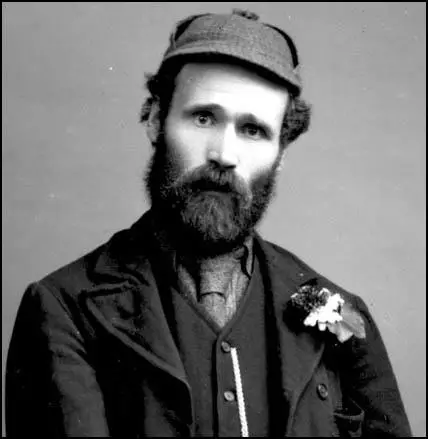The Miner: A Journal for Underground Workers
In 1886 Keir Hardie was appointed secretary of the Scottish Miners' Federation. The following year, Hardie began publishing a monthly newspaper called The Miner: A Journal for Underground Workers. "The timing was good in that universal primary education meant that more miners could read. The Scottish Miners' Federation distributed it, although Hardie carefully retained the ownership." (1)
Its first number appeared in January, 1887. In the first issue he stated: "The magazine, while dealing primarily with mining affairs, will advocate reform in every direction which promises to bring relief to the toiling millions. The agitation for the suppression of the liquor traffic and the nationalisation of the land will have our heartiest support." (2) James Maxton argued that he used the newspaper to teach "the people that their poverty was a man-made thing, and that they themselves had it within them to remove the poverty". (3)
It was published for two years, with Hardie supplying about a third of its content: "It was a very remarkable paper, and to those who are fortunate enough to possess the two volumes, it mirrors in a very realistic way the social conditions of the collier folk of that time, and also throws considerable light on the many phases and aspects of the general Labour movement in the days when it was gropingly feeling its way through many experiments and experiences towards political self-reliance and self-knowledge". (4) The newspaper advocated a Scottish miners' federation and attacked the coal-owners for the bloody suppression of the Lanarkshire workers that took place that year. (5)

Hardie also attempted to use the newspaper to give the miners a political education. "So long as men are content to believe that Providence has sent into the world one class of men saddled and bridled, and another class booted and spurred to ride them, so long will they be ridden; but the moment the masses come to feel and act as if they were men, that moment the inequality ceases." (6) However, Hardie rejected the theories being advocated by communists . In one speech he pointed out "I reject what seems to be the crude notion of a class war, because class consciousness leads nowhere... The watchword of socialism is not class consciousness but community consciousness." (7)
In August 1888, Hardie resigned from the Liberal Party and helped to establish the Scottish Labour Party. He did not want a socialist party on the lines of the Social Democratic Federation (SDF). He wanted a party which would attract radicals, dissatisfied liberals, trade unionists and social reformers concerned about the plight of children. A programme was agreed that included the "prohibition of the liquor traffic, the abolition of the House of Lords, the nationalization of land, minerals, railways, waterways and tramways, free education, boards to provide food for children and taxes on incomes over £300." (8)
Hardie also changed the name of his newspaper from The Miner to The Labour Leader. He attended the inaugural Second International meetings in Paris in July, 1888, where he joined up again with Tom Mann, the leader of the Eight Hour League, that was influential in convincing the trade union movement to adopt the statutory eight-hour day as one of its core policies. Mann commented in his autobiography that "our relations were always harmonious". They joined forces in persuading the conference to allow anarchists such as Peter Kropotkin to address delegates. (9)
Primary Sources
(1) Keir Hardie, The Miner (January, 1887)
The magazine, while dealing primarily with mining affairs, will advocate reform in every direction which promises to bring relief to the toiling millions. The agitation for the suppression of the liquor traffic and the nationalisation of the land will have our heartiest support
(2) Bob Holman, Keir Hardie: Labour's Greatest Hero? (2010)
Also in the eventual year of 1887, with funds from the Scottish Miners' Federation and some from his own pocket, he started a monthly journal of sixteen pages called The Miner, A Journal for Underground Workers. The timing was good in that universal primary education meant that more miners could read. The Scottish Miners' Federation distributed it, although Hardiecarefully retained the ownership.

